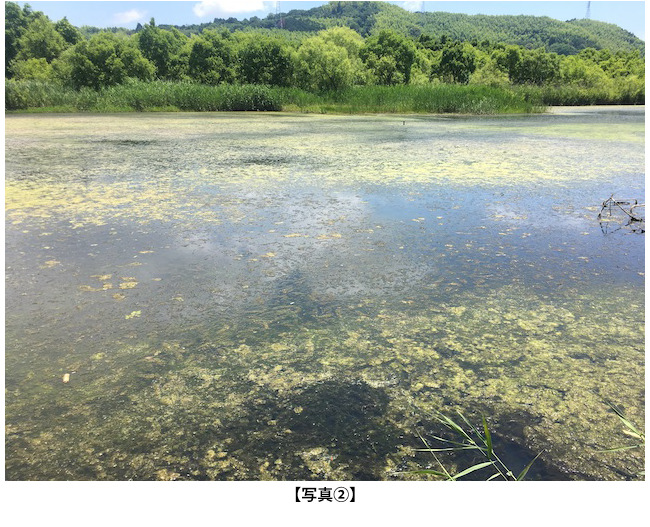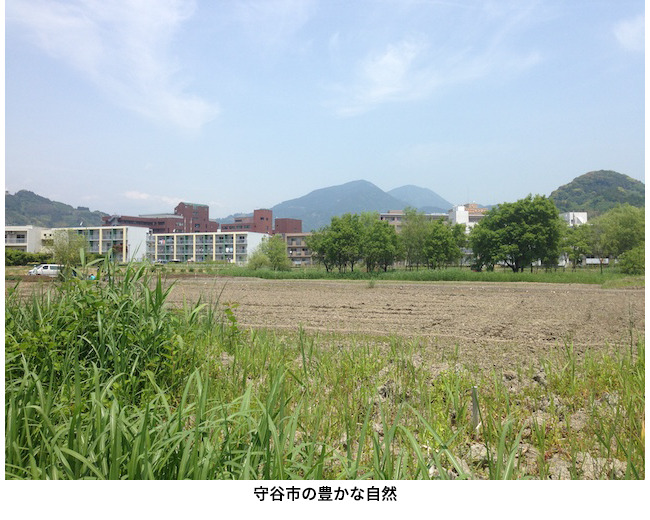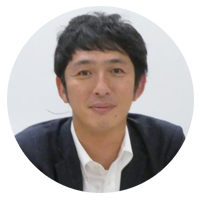What is "green infrastructure"?
In August of this year, the IPCC (UN Intergovernmental Panel on Climate Change) announced that the cause of global warming was an increase in greenhouse gases such as carbon dioxide. Measures and the movement to reduce greenhouse gas emissions are further accelerating.Along with that, the development of environmental business is also active.On the other hand, it is expected that the conservation of biodiversity, which has not received much attention in Japan, will emerge as a new issue.Under these circumstances, what is expected as a keyword is "green infrastructure," which is also supported by the national government (Ministry of Land, Infrastructure, Transport and Tourism).We asked Professor Nishida, who is studying from the perspective of environmental policy studies.
Learn about biodiversity through games and contribute to the creation of green infrastructure
First, I will introduce an interesting app.It is a "living thing" collection app Biome [Photo 9] that allows you to take and post pictures of animals and plants, search for names, and use information uploaded by other users as a picture book, just like a game.It contains about 2800 species of flora and fauna in Japan, has already been downloaded 40 times, and is said to have more than 1 active users.

It is operated by BIOME Inc.It was a venture from Kyoto University where I spent my graduate school days, and from that connection, I sent students from the laboratory to internships, but this summer, the university was the first university to formally form a business alliance and provide educational content. We are jointly developing.
Conserving biodiversity is difficult because there are no indicators to measure it.First of all, it is necessary to find out how many creatures are on the earth, but this application makes users aware of the diversity, such as "There are so many creatures in the city!", And enjoys maintaining it. It has the potential to play a role.We also expect that it can be used in various ways, such as monitoring street trees and observing the warming of the surroundings from changes in the habitat of living things.
In the first place, green infrastructure is the concept of developing infrastructure by utilizing the functions of nature.In a little more detail, let's consider the various functions and mechanisms of the natural environment (living organisms, providing a place for growth, creating a good environment, controlling temperature rise, etc.) and mechanisms in social capital development and land use as one infrastructure. That is.In addition to the purpose of "protecting" and maintaining nature, there is something new about actively "utilizing" it.An easy-to-understand example is utilization for disaster prevention and mitigation.In recent years, due to the effects of warming, guerrilla rainstorms that have never been experienced have occurred in various places, causing great damage.
This guerrilla rainstorm is difficult to predict, and the country's financial resources are scarce, so it is not possible to increase the number of embankments at once as a countermeasure.Now, it is necessary to think about "how to reduce the risk" as well as "prevent it at all costs".Therefore, there is an epoch-making approach called "basin hydraulic control".Rather than quickly collecting rain in a river and draining it into the sea, it slowly stores water in a large area and then slowly drains it into the river to reduce the risk of disaster.Necessary related bills were also put in place this spring.For example, we may promote the utilization of a retarding basin (Shizuoka City) [Photo XNUMX] that contributes to nature restoration, and the development of planting zones with rainwater storage and infiltration functions in urban areas.It is expected that the economy will be revitalized by the retention of people due to the reduction of costs and the improvement of the landscape.This initiative is spreading worldwide, and there have been cases of rapid growth in cities.
We are now using Biome to challenge the search for the right place for the green infrastructure.Use the quest function to ask users to search for plants that grow mainly in wetlands.And by collecting and analyzing it, I hope that even ordinary people can easily find the right place.We have already started the demonstration experiment * in Moriya City, Ibaraki Prefecture from July, and set up a quest "Let's search for green infrastructure seeds from damp plants!" Until October, and "AI Moriya Ikimono" by citizens including children. I called on the investigation team.There is also an incentive for those who complete the quest to receive Moriya green points, which is a local currency worth up to 7 yen, and it is popular that it encourages consumption, such as purchasing locally produced and locally consumed foods.It's fun, profitable, and can contribute to the creation of social infrastructure.

* "Moriya Green Infrastructure Project": Part of the Moriya Ikimono Survey Team, which is entering its fourth year.A project by BIOME Inc., Toho Leo Co., Ltd., which has a proven track record in rooftop greening, Fukuyama Consultants Co., Ltd., and our university.Reiwa 4 years Selected as a "green infrastructure x smart city nature symbiotic smart city model project" by the Ministry of Land, Infrastructure, Transport and Tourism's smart city related projects.
Attention from ESG investment and financial industry!
My specialty is environmental policy, and my research theme is to solve social issues by utilizing the value of the natural environment.For this reason, it is rare to work only in the laboratory, and in many cases, we are conducting research in collaboration with government agencies (national and local governments) and companies, especially for projects related to green infrastructure. I am participating in.
Recently, ESG investment (investment that considers society, environment, and governance) has received a great deal of attention from financial institutions and investors.Following the launch of "TNFD (Nature-related Financial Information Disclosure Task Force)" (aiming to be able to appropriately evaluate and report to the outside world the risks and opportunities to "natural capital" brought about by corporate business activities) by the United Nations Development Plan, etc. I think this is because investors have become more sensitive to "natural capital."
Natural capital is "capital (= stock) formed by nature, such as forests, soil, water, air, and biological resources."For example, if you are a timber company, you must consider the environment after logging.The same applies to water and minerals that we handle, and the prime market, which will replace the First Section of the Tokyo Stock Exchange from next spring, may be required to disclose such natural information in the future.In Europe, major investment institutions have already begun to create new rules and develop corresponding cutting-edge environmental technologies, such as thinking about evaluation methods, and it is highly possible that this trend will spread to Japan in the future. It has been.
This October, the 10th Conference of the Parties to the United Nations Convention on Biological Diversity (COP15) was held.In addition to reducing greenhouse gas emissions, the global focus on biodiversity in the context of such natural capital is expected to grow stronger in the future.Biodiversity is directly linked to the procurement of raw materials, as healthy water requires abundant forests, starting with various microorganisms.Once diversity begins to be lost, it costs a lot to restore, and extinct ones are irreversible.

Message to high school students Learn life science through field fusion and contribute to a carbon-free society
The Faculty of Life Science, especially the Department of Industrial Life Science, is a department that learns about life science and works on solving social issues based on that knowledge.Not only people who like research on living things, but also people who want to collaborate with various people to solve social issues and engage in business.An economic perspective is also needed to think about how to connect with corporate activities.English is also required for communication with foreign countries.We also need to broaden our horizons to geography, history, and political economy.A world where people who have learned STEAM education (Science, Technology, Engineering, Art, Mathematics) can play an active role is open.
I don't think there are many faculties that can study life sciences in such a wide range, from biology to biodiversity and green infrastructure.While still in school, I have the opportunity to collaborate with companies and local governments, and after graduating, I can think of a wide range of careers, not only in the bio / environmental field, but also in the public sector, finance, and construction / building fields.In an era when new values are born, new markets will be born and economic activities will flourish.I hope that you will study together at our faculty and make use of that learning to contribute to the construction of a sustainable society.

Kyoto Sangyo University Faculty of Life Sciences Department of Industrial Life Sciences Associate Professor
Professor Takaaki Nishida
Graduated from the Faculty of Agriculture, Kyoto Prefectural University in 2004. Completed the master's program at the Department of Biological Sciences, Graduate School of Science, Kyoto University in 2006, completed the doctoral program in 2009, and became a doctor (science). From 2006 to 2009, Research Fellow of the Japan Society for the Promotion of Science (DC1). Since April 2009, as a researcher at Mitsubishi UFJ Research & Consulting Co., Ltd., Policy Research Business Headquarters, he has been engaged in various policy research studies of government agencies and consulting of environmental management of private companies for 4 years. He has been in his current position since April 10.Ministry of Land, Infrastructure, Transport and Tourism Green Infrastructure Public-Private Partnership Platform Steering Committee.Born in Kanagawa Prefectural Shichirigahama High School.

